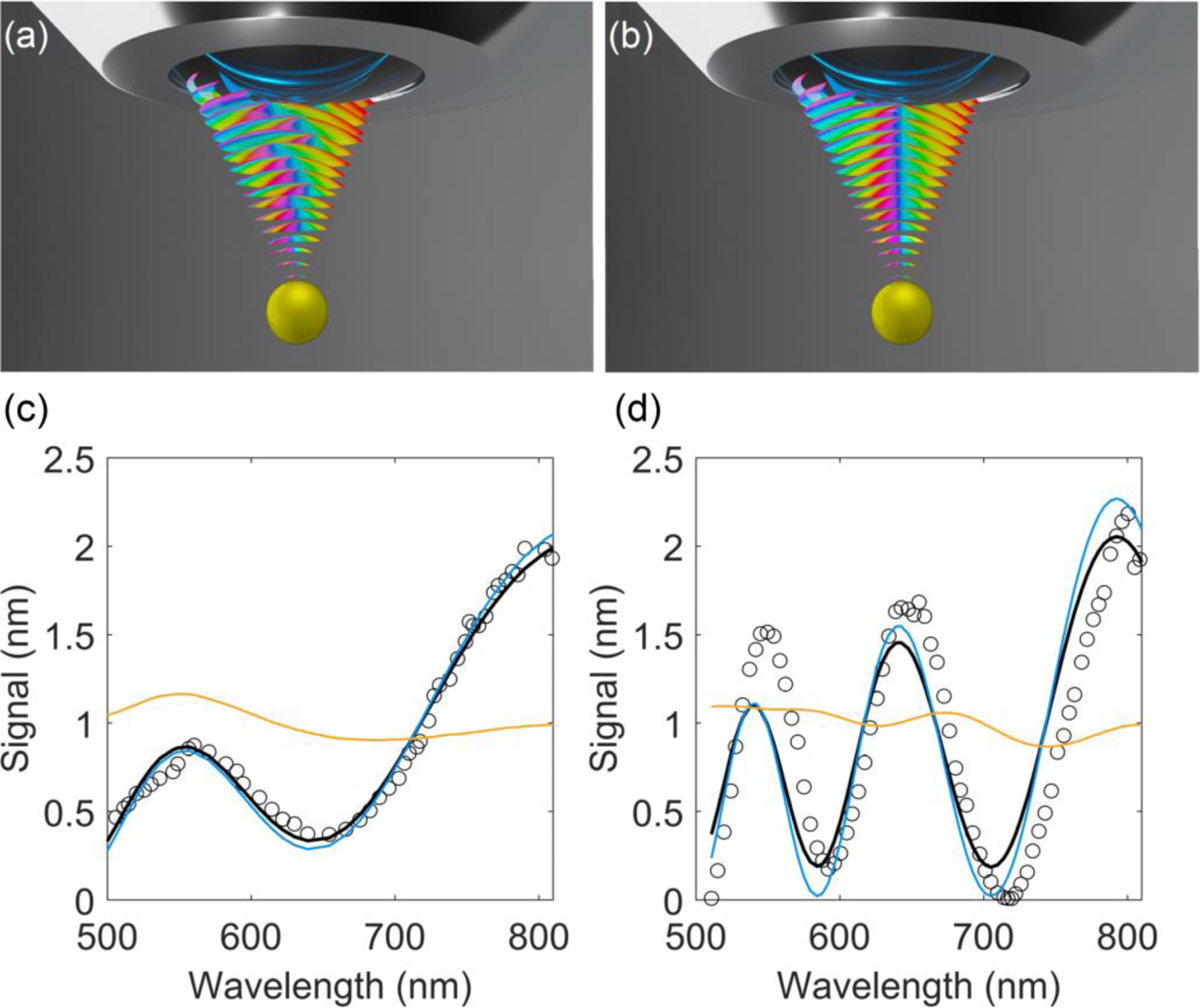Figure 2.

Principles of coherent CLASS microscopy. The schematic shows the interplay between phase interference and angular averaging in the incoherent (a) and coherent (b) cases. Spectra of light scattered by polystyrene microspheres with nominal diameters of (c) 540 ± 20 nm and (d) 1050 ± 20 nm in aqueous solution of glycerol (circles) experimentally measured using the coherent CLASS microscope with a large numerical aperture objective, NA=1.3. Also shown are simulations of the incoherent (solid orange line) and coherent (solid blue line) CLASS microscopy spectra for the same microspheres under the same measurement conditions. The black solid lines are the best fits of the spectra represented by Eq. (4) for both microsphere sizes. The resulting degree of coherence of the CLASS spectra is 0.93.
